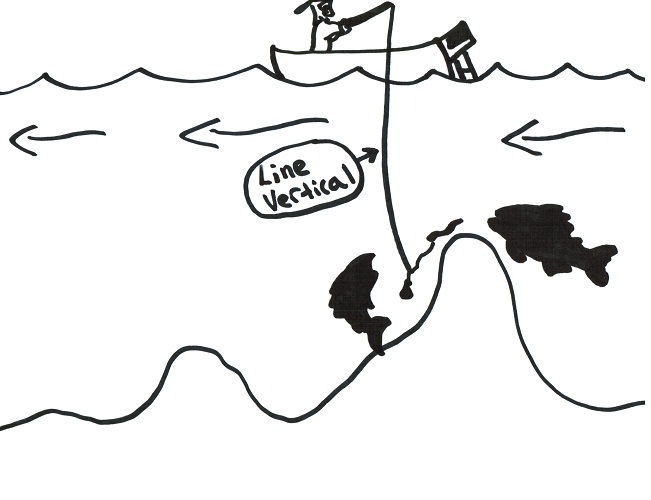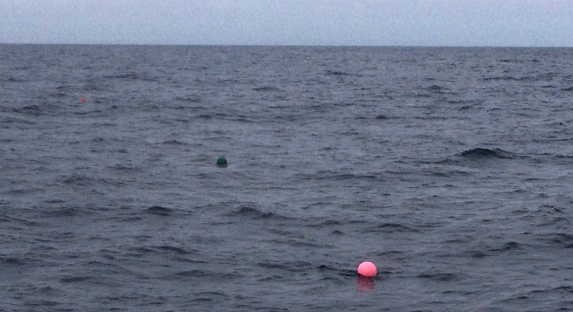Over the past several days I've noticed that live bait has worked better for me, and the guys I've been fishing with, than lures and other artificial baits. Whether you're fishing for bass or tuna, live bait will probably be your best bet at catching a fish or two-especially the big ones.
However fishing live bait is not as simple as it sounds. In many scenarios, placing a live baitfish on a hook and letting him swim around is just not enough. I feel it's best to be at least somewhat comfortable with a few different live bait techniques before heading out onto the water in pursuit of big stripers and giant tuna.
In this post I'll share with you five ways I have found success fishing with live bait. I will also share with you a free eBook and a free video with more detailed information.
If you have any questions you can leave me a comment, or a voice mail (yes a voice mail!), at the bottom of this post.
1) Fishing With No Weight & Letting The Bait Swim Around

Whenever you can, I feel it is best to fish with zero weight and allow the bait fish to do its thing. This strategy usually only works in shallow water or areas with very weak current flow.
Fishing with no weight is exciting because often times the bait fish get scared to the surface when a predator is in hot pursuit. No weight also makes the fish less susceptible to spitting the bait, because there is no unnatural weight on the line.
On Cape Cod there are many different live bait options including:
- Pogies
- Mackerel
- Eels
- Live Crabs
- and many more options....
Live crabs in particular work exceptionally well on Cape Cod for striped bass and tautog. Earlier this spring I fished green crabs from shore for tautog with my friend Andrew and was able to pull a couple keeper tog from among the rocks and boulders.
I recapped the entire experience in a MFCC members' video report which I am making available for you to watch right now by clicking below. You'll be prompted to enter your first name and email before watching, so I can send you more helpful content later throughout this summer:
2) Using A 3-Way Rig For Deep Areas With Strong Current

In deep areas where there is a lot of current, and when fish are holding tight to the bottom, I like to use a 3-way rig. These rigs make it easy to present the bait to the fish.
I will use anywhere from 1 to 12 ounces of weight depending on the speed of the current and depth of the area fished. In most situations, you'll want to use enough weight to keep the line vertical when fishing.

When a fish hits, lower the rod tip for an instant and allow the line to get tight, and then set the hook. If you are marking fish along the bottom, but not getting any bites, then the most common issue is not using enough weight.
Your line may be rising up in the water column and the fish never even see the bait, as displayed in the image below.
 Make sure you can "feel" bottom, if you can't then use more weight until you do.
Make sure you can "feel" bottom, if you can't then use more weight until you do.
3) Using a Rubber Core Sinker

When the current is not very strong, or when I am just lightly being pushed along by the wind and want to achieve a bit more depth, I will use a rubber core sinker. The heaviest I ever go with a rubber core is 3/4 of an ounce.
I try to keep the weight as light as possible so fish don't get freaked out by the added weight on the line. Rubbercores can be attached directly to the leader which make them very easy to rig up and use at a moment's notice.
4) Using a Balloon or Float

I've used balloons when tuna fishing and I plan on trying out floats this season when striped bass fishing. This type of live bait fishing is sorta like fishing with a bobber.
However, the float is used more or less to help keep the live bait at a very specific depth. A weight is dropped from the balloon or float to a specific depth and the live bait is fished off that.
So if you are a marking fish at a specific depth you can accurately adjust the balloon or float setup so that the bait is positioned at that specific depth. This setup works extremely well in conjunction with a steady chum line.
5) Under A Kite

Catching a giant bluefin tuna by fishing a live bait under a kite, is sorta like fishing a topwater plug for striped bass, multiplied by 1,000%. Watching a huge tuna engulf a bait right off the surface is a sight that will never be forgotten!
There are many intricacies and details that go into kite fishing for giant tuna, but the general gist of the technique is diagrammed below:

If you'd like to learn more about kite fishing, and how to catch a tuna from a small boat off Cape Cod, then I invite you to download a 100% free eBook about that very topic.
It's called "Catching Tuna From A Small Boat" and you can download it right now by clicking here or on the image below:
In Conclusion & Looking Forward
Summer is in full swing here on Cape Cod and the fishing is heating up in some areas, and dying off in others. I appreciate all the posts and reports that more than 500 MFCC members have been posting in the MFCC forum. Great work and keep it up!
Is there a topic or technique you'd like to learn more about?
Then let me know by commenting below, or by leaving me a voicemail by clicking here.
Tight lines and take care,
Ryan



Hi Ryan,
What about fish finder rigs? Do you fish them the same way and in the same situations as 3-ways? What’s your preference?
Jim
Hi Jim! Fish-finder rigs work great in the same situations as 3 ways.
Only issue I have found with fish-finders is that with a real strong and lively bait, say a live mackerel or pogie, sometimes the bait fish will swim to the surface when using a fish-finder.
With a 3 way it’s much more difficult for the baitfish to defy the weight of the sinker.
I have not fished tautog before and can you still find them along jetties and rocky areas in this part of the year
Hi Nolan! Catching tautog from shore is a lot of fun.
Here on Cape it’s more a spring and fall thing. I’ve had good luck during May and I will probably try again during Oct. and November.
I’ve actually never tried catching tautog from shore during the summer, so if you give it a try I would be interested in hearing how it goes!
Was introduced many years ago to a rig my father made up for flounder,scup,maybe a few tautog and bass were caught on this as well.Just a 1 to 1-1/2 ft.leader on a swivel hook on one end (of course) and a teardrop sinker on the leader untied to allow it to travel the length of that leader which would make that hook and bait end to bob back and forth.On both ends was a 1 in.square piece of leather attached to same to keep the sinker from going beyond the swivel or hook & bait..Crude,but very effective and now I’m sure there are more than a few modern variations of this now.I remember him putting the thought into this while a trip off of Cuttyhunk and making it up right then and there.
Excellent comment Jeff! Pretty cool rig as well.
Thanks for sharing. I am sure it would work just as well as any of the “modern day” stuff.